Here’s a sampling of what our contributors have been drinking…
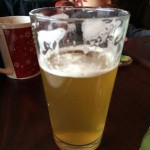 Lenn Thompson, Executive Editor: Rocky Point Artisan Brewers Harvest Pilsner
Lenn Thompson, Executive Editor: Rocky Point Artisan Brewers Harvest Pilsner
Our daughter’s birthday December 5. Our son’s is January 31. Sandwich the holidays in between the two and all of the school and social chaos that ensues — and you get non-stop activity from Thanksgiving until the Super Bowl. It’s important to my wife and I that we give each event its due — no lumping either birthday into the holidays in any way. Part of our strategy is to make sure we create and maintain traditions along the way.
This year, we added a new tradition that I think I’m going to rather enjoy — a visit to Crazy Beans coffee shop in Miller Place, NY after getting our Christmas tree. Red holiday cups or no, I prefer not to patronize national companies when there is a locally owned small business alternative. That’s exactly what Crazy Beans is.
I don’t drink coffee, but my wife speaks highly of the brew there. The kids certainly enjoyed their over-sized hot cocoas with whipped cream in off-beat, mis-matched mugs. And here is where Crazy Beans excites me — owner Callie Brennan is a beer geek, and as such, has two locally brewed beers on tap at all times. It’s probably not surprising that I went in that direction, with this crisp, refreshing pilsner from a brewery I know very well — it’s only a couple miles from my house.
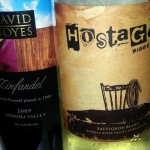 Jim Silver, Business Editor: Small-Production California Wines
Jim Silver, Business Editor: Small-Production California Wines
I don’t think anyone out there thinks the “drink local” enthusiasm resides in New York only. I’ll admit though, it seems stronger in New York than here in Sonoma. Perhaps everyone is simply used to having access to all this great California wine all the time?
We just visited the St. Francis winery near our new apartment and they were pouring a dozen different and intriguing Sonoma wines. Not a single one was distributed outside of the winery. This week I found a small and terrific seller of hyper-local wines and beers right here in Rincon Valley and they recommended these two (pictured) micro-wineries.
The Hostage Sauvignon Blanc was charmingly plump and flavorful, with a mango and papaya accent to the grassy, gooseberry flavors. The David Noyes Zinfandel, sourced from a century-old vineyard in the valley was really complex, well knit, solid and very long. Amazingly good quality considering the size of the place. The Hostage production — 60cases. The zinfandel? All of 75 cases. I knew I’d find interesting little gems out here, rarely if ever seen on the east coast, but I had no idea they’d be so plentiful and so intriguing too!
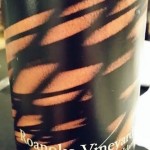 Michael Gorton, Long Island Correspondent: Roanoke Vineyards 2010 “The Hill”
Michael Gorton, Long Island Correspondent: Roanoke Vineyards 2010 “The Hill”
Roanoke Vineyards is the second vineyard you come to when driving east along Sound Avenue on the North Fork. Many who travel and visit the trail are apt to hit up the first one vineyared they see — and maybe pass on the second. Don’t make that mistake.
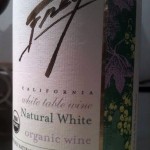 Todd Trzaskos, North Country Correspondent: Frey Vineyards NV Natural White Table Wine
Todd Trzaskos, North Country Correspondent: Frey Vineyards NV Natural White Table Wine
I was shopping the tiny local, kinda hippy co-op for some granola sundries that we’d run low on, and I decided to spend a minute looking at their even tinier wine selection. I don’t often peruse there because the pickings are slim, and it’s right next to the home brew section where I tend to blow my also tiny budget. With a deficit of white wines in the home inventory, I thought maybe I’d find something interesting with which to plug a hole. I saw standard chardonnays, and sauvignon blancs, no riesling, yes a torrontes that I’ve had, not much else, and then I spotted the Frey Organic Sustainable No Sulphites added Natural White Table Wine. That’s a lot of upside features for a lowly table wine, especially one priced at $9. I remember having their zinfandel before with positive recollections, so why not?
It’s a little funny reviewing a beer for the New York Cork Report that is not available in New York, but it should be. Fat Tire is the flagship amber beer of New Belgium Brewing, out of Fort Collins, CO. Although it is available in 33 states (and as close as Delaware) it has yet to be distributed to the Northeast/New England area. Asking a beer geek to name their favorite beer is a little like asking a parent who their favorite child is. You’ll be met with a contemplative look and ultimately no real answer. But I can honestly pick this brew as one of my favorite all-time ales.
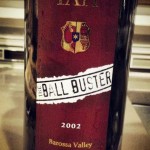 Michael Chelus, Niagara-Lake Erie Correspondent: Tait 2002 “The Ball Buster” Shiraz Blend
Michael Chelus, Niagara-Lake Erie Correspondent: Tait 2002 “The Ball Buster” Shiraz BlendAt a dinner party over the weekend, my friend and colleague pulled this bottle from his cellar to go with a hearty beef bourguigon. It was big and bold and paired with the braised beef quite well.

